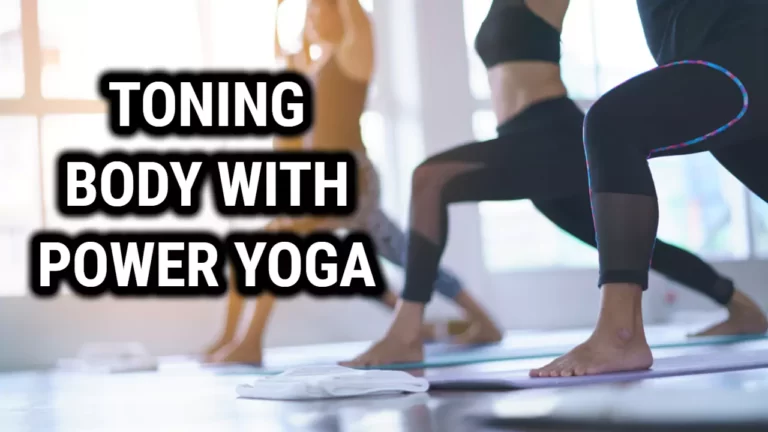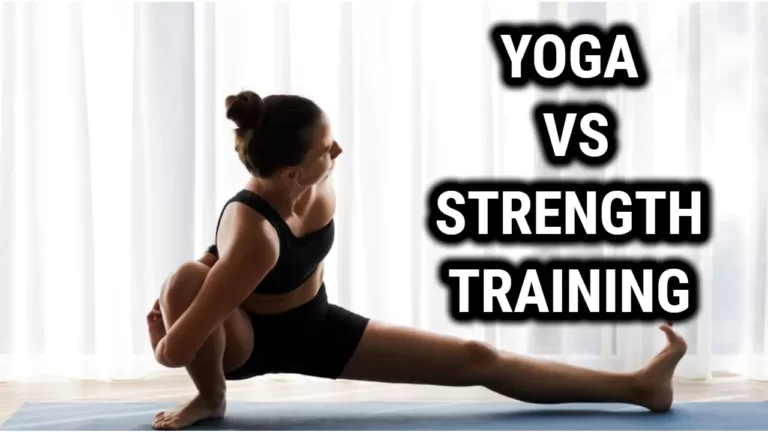Yoga and Intermittent Fasting: A Winning Combination for Weight Loss?

Yoga and intermittent fasting are two popular practices that have been gaining attention in recent years. While yoga has been around for centuries, intermittent fasting has become a trendy way to lose weight and improve overall health. But can combining these two practices help in losing weight?
Intermittent fasting involves restricting calorie intake for a specific period, while yoga is a physical, mental, and spiritual practice that includes various postures, breathing techniques, and meditation. Both practices have been associated with weight loss and improved health. However, the question remains: Can practicing yoga along with intermittent fasting lead to better weight loss results?
Some experts suggest that combining yoga with intermittent fasting can be an effective way to lose weight. Yoga can help in reducing stress levels, which can be a significant factor in getting healthy. Intermittent fasting can help in reducing calorie intake and improving insulin sensitivity. Together, these practices can enhance weight loss and improve overall health.
What is Yoga?
Yoga is an ancient practice that originated in India and has been around for thousands of years. It is a physical, mental, and spiritual discipline that involves a series of postures, breathing exercises, and meditation techniques. The practice of yoga is known to have many health benefits, including reducing stress, improving flexibility, and increasing strength.
Yoga is not just a physical exercise but also a way of life that helps individuals achieve balance and harmony in their lives. It is a holistic approach to wellness that focuses on the mind, body, and spirit. Practicing yoga regularly can help individuals achieve a sense of calm and inner peace, which can be beneficial for overall health and well-being.
Some of the most popular types of yoga include Hatha yoga, Vinyasa yoga, and Bikram yoga. Hatha yoga is a gentle form of yoga that focuses on breathing and basic postures. Vinyasa yoga is a more dynamic form of yoga that involves flowing from one posture to the next. Bikram yoga, also known as hot yoga, is practiced in a room heated to 105 degrees Fahrenheit and involves a series of 26 postures.
What is Intermittent Fasting?
Intermittent fasting is a dietary pattern that involves cycling between periods of eating and fasting. It is not a diet per se, but rather an eating pattern. There are several different types of intermittent fasting, but the most common ones include:
- 16/8 method: This involves skipping breakfast and restricting your daily eating period to 8 hours, such as from 12 pm to 8 pm, and then fasting for the remaining 16 hours.
- 5:2 diet: This involves eating normally for 5 days of the week and restricting calorie intake to 500-600 calories for the remaining 2 days.
- Alternate-day fasting: This involves fasting every other day, either by not eating anything or by restricting calorie intake to 500 calories.
Intermittent fasting has become increasingly popular in recent years due to its potential health benefits, including weight loss, improved metabolic health, and reduced risk of chronic diseases such as diabetes, heart disease, and cancer. It is also believed to help improve brain function and increase lifespan.
Intermittent fasting works by triggering a metabolic switch in the body that shifts it from burning glucose for energy to burning fat. During periods of fasting, the body breaks down stored fat into ketone bodies, which can be used for energy. This process is known as ketosis and is similar to the process that occurs during a low-carb or ketogenic diet.
Benefits of Yoga
Improves Metabolism
Yoga helps to improve metabolism, which is the process of converting food into energy. Certain yoga poses, such as the sun salutation, have been shown to increase metabolic rate and promote weight loss. In addition, yoga helps to regulate the digestive system, which can also aid in weight loss.
Reduces Stress and Anxiety
Stress and anxiety can lead to weight gain, as people tend to overeat when they are feeling stressed or anxious. Yoga is known to reduce stress and anxiety levels, which can help to prevent overeating and promote weight loss. Yoga helps to calm the mind and reduce the production of stress hormones, such as cortisol.
Increases Flexibility and Strength
Yoga is a great way to increase flexibility and strength, which can help to improve overall fitness levels. Certain yoga poses, such as the warrior pose, can help to strengthen the muscles in the legs and core, while others, such as the downward dog, can help to improve flexibility in the hamstrings and lower back.
Improved flexibility and strength can help to prevent injuries and improve overall physical performance. Overall, yoga is a great way to improve overall health and well-being. It can help to promote weight loss by improving metabolism, reducing stress and anxiety, and increasing flexibility and strength.
Benefits of Intermittent Fasting
Helps with Weight Loss
Intermittent fasting can be an effective tool for weight loss. By reducing overall calorie intake, it can lead to a calorie deficit, which is necessary for weight loss. Additionally, it can help reduce visceral fat, the harmful fat that surrounds the organs and has been linked to various diseases.
The body also tends to burn fat for fuel during periods of fasting, which can further aid in weight loss. However, it’s important to note that the weight loss benefits of intermittent fasting may vary from person to person and depend on various factors, such as diet and exercise habits.
Improves Insulin Sensitivity
Insulin is a hormone that plays a key role in regulating blood sugar levels. When the body becomes resistant to insulin, it can lead to various health problems, such as type 2 diabetes.
Intermittent fasting has been shown to improve insulin sensitivity, which means the body is better able to use insulin to regulate blood sugar levels. This can help reduce the risk of developing insulin resistance and related health problems.
Reduces Inflammation
Inflammation is a natural response of the body to injury or infection. However, chronic inflammation can lead to various health problems, such as heart disease and cancer.
Intermittent fasting has been shown to reduce inflammation in the body. This may be due to the fact that it can reduce oxidative stress and improve cellular repair processes.
Overall, intermittent fasting has several potential benefits for health and weight loss. However, it’s important to approach it in a safe and sustainable way, and to consult with a healthcare professional before starting any new diet or exercise regimen.
The Relationship Between Yoga and Intermittent Fasting
The practice of yoga and intermittent fasting have been known to work together to promote weight loss and overall wellness. Both practices emphasize the importance of self-discipline, mindfulness, and a balanced relationship between the body and mind.
Yoga, which involves physical postures, breathing exercises, and meditation, can help reduce stress and promote relaxation. This can help individuals better cope with the challenges of intermittent fasting, which can induce stress on the body.
The mindfulness cultivated through yoga can also help individuals make healthier food choices during their eating windows.
Intermittent fasting, on the other hand, can help individuals achieve a caloric deficit, which is necessary for weight loss. When combined with yoga, intermittent fasting can help individuals burn fat more efficiently.
This is because sustained intermittent fasting and yoga can retrain the muscles to burn fat for energy instead of glycogen. It’s important to note that while yoga and intermittent fasting can be beneficial for weight loss, they should not be seen as a quick fix or a replacement for a healthy diet and regular exercise.
It’s also important to consult with a healthcare professional before starting any new diet or exercise regimen.
Overall, the relationship between yoga and intermittent fasting is one of mutual benefit. By incorporating both practices into their lifestyle, individuals can achieve greater physical and mental well-being.
Does Yoga Along with Intermittent Fasting Help in Losing Weight?
Yoga is a popular form of exercise that has been around for centuries. It is known for its ability to improve flexibility, balance, and strength. Intermittent fasting, on the other hand, is a dieting method that involves restricting food intake for certain periods of time. Both yoga and intermittent fasting have been shown to help with weight loss, but can combining them lead to even better results?
Research Studies
There have been a few studies that have looked at the effects of combining yoga and intermittent fasting on weight loss. One study published in the Journal of Complementary and Integrative Medicine found that a combination of yoga and intermittent fasting led to significant weight loss in overweight women.
The study participants practiced yoga for 60 minutes, three times a week, and followed an intermittent fasting diet for eight weeks. At the end of the study, the women had lost an average of 5.5 pounds.
Another study published in the International Journal of Yoga found that practicing yoga during a fasting period may help to increase weight loss. The study participants practiced yoga for 30 minutes, three times a week, during their fasting period. At the end of the study, the participants had lost an average of 3.5 pounds.
Testimonials
While there is limited research on the combination of yoga and intermittent fasting for weight loss, there are many people who have reported success with this approach.
Some people find that practicing yoga during their fasting period helps them to stay focused and motivated. Others find that the combination helps them to feel more energized and less hungry throughout the day.
It is important to note, however, that everyone is different and what works for one person may not work for another. It is always a good idea to talk to a healthcare professional before starting any new diet or exercise routine.
Conclusion
There is evidence to suggest that both yoga and intermittent fasting can help with weight loss.
It is important to note that weight loss is a complex process, while yoga and intermittent fasting may be helpful for some people, they may not be effective for everyone.
For those who are interested in trying yoga and intermittent fasting to aid in weight loss, it is recommended to speak with a healthcare professional before starting any new exercise or diet regimen. Additionally, it is important to approach weight loss in a healthy and sustainable manner.






